Jack Dyckhouse, Vice President of the Society of Indochinese Philatelist annotated his NVN military collection : After the Communist Viet Minh lost support of China in 1944 they turned to the consolidation of fragmented guerrilla units inside Vietnam. The Viet Minh entrusted the task of military and organizational preparation for the anticipated Japanese collapse to Vo Nguyen Giap. It was only 2 1/2 months before the Japanese coup de force that Vo Nguyen Giap launched the first platoon of the People’s Liberation Troops. Formed on December 22nd, 1944, in a Tho settlement in Dao Bang Province, on the border of China, this “army” consisted of 34 men equipped with two revolvers, seventeen rifles, fourteen flintlock rifles and one light machine gun.
Interestingly enough most of the early weapons and military training was provided courtesy of the Office of Strategic Services (OSS) which was the precursor of the American CIA. The idea of the OSS was to use the Viet Minh in order to fight the Japanese Occupation Force, regardless of the suspected Communist affiliation of the Viet Minh.
Thus the North Vietnamese Peoples Army was born and with it the need to transport messages. While in the early days of 1944-1945 messages were exchanged using military messengers and, to the authors knowledge no postal history of that period survives, this changed somewhat with the United States dropping the atomic bombs on Hiroshima and Nagasaki on August 6th and 9th of 1945. Japan requested an armistice on August 15th. With all French troops being imprisoned or having fled, a power vacuum was created that was immediately used by Vietnamese Nationalists and the Viet Minh to take charge by seizing control of the major cities and all key administration centers in the country.
The Japanese, realizing that all was lost, offered no resistance and left the field pretty much to the Viet Minh and Nationalists in order to make it more difficult for the French to return to power. By August 19th, the Viet Minh had seized Hanoi and taken over the mail in all the country. From that period on, until the return of the French colonialists in October 1945, the Viet Minh hence could make use of the existing postal system. Even after the French had established themselves back in all major cities and towns, including Hanoi in November/December of 1945 the French did not intervene in the general domestic postage system, which, of course, also handled Viet Minh military mail .
Here is a strike of the five star Viet Minh cachet that was developed for the Southern city of Cholon in November of 1945.
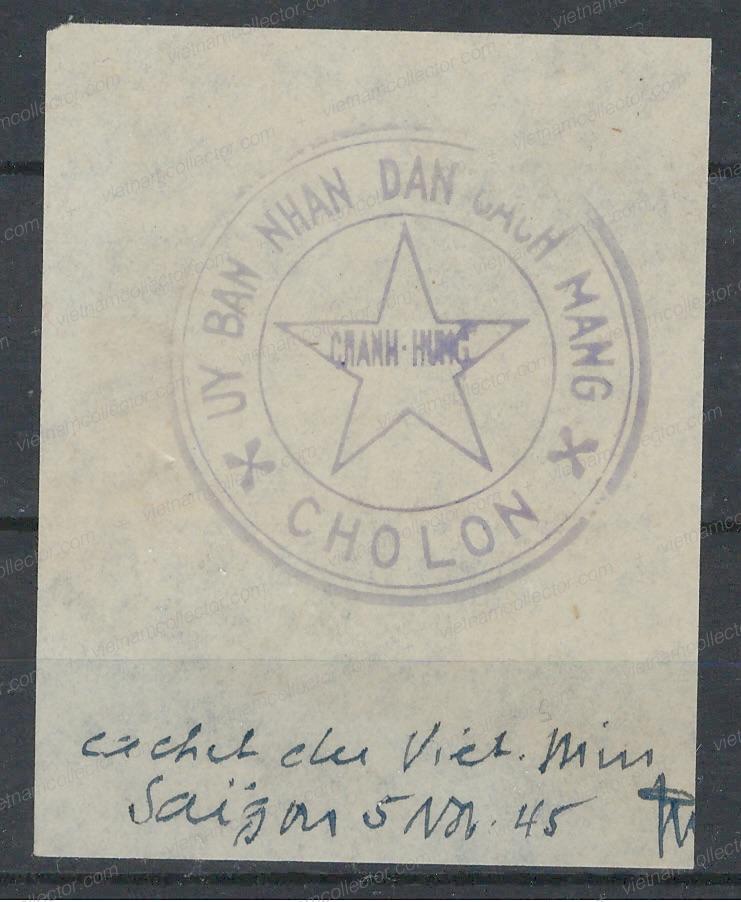
Initially, military mail had to be franked with postage stamps (either by using Viet Minh of Indochinese stamps). This was true from when the Viet Minh took over the postal system unil the “Clash of Hanoi” in December 1946. The French Army established its own military postal system and hence let the Viet Minh be in charge of all other mail. This, of course, changed on December 19th, 1946 when the Viet Minh attacked the French troops in the “Clash of Hanoi”. After that day the Viet Minh postal administration was driven into the underground by the fighting.
This took the shape of the Viet Minh creating their own postal administration primarily in the country side that was not controlled by the French or by subverting post offices in cities, that were officially run by the French administration during the day, into Viet Minh post offices at night. Postal staff often served two masters. Hence it was possible that French colonialist letters using Indochinese stamps were stamped with the same cancels, as Viet Minh mail, franked with overprinted Indochinese stamps and Viet Minh stamps.
Needless to say all civilian and military mail from the end of 1946 until the French surrendered North Vietnam in 1954 is exceedingly rare. Be prepared to pay anywhere from $500 to $4,000 for such letters depending on what stamps or markings were used. This has to do with the fact that possessing a Viet Minh letter or stamp could mean a death sentence at the hands of the French occupiers. So most of these letters were destroyed immediately upon receipt. The subsequent decade long war with the American forces, the tropical climate that could destroy paper within months and the need for recycling over decades due to severe raw material shortages added to the dangers for such letters. Mail, after the French left the scene, is a bit more common but still extremely rare as the stampless covers held little attraction for philatelists and were either thrown away or ended up in Government archives, where they were later on purged or destroyed in a bombing raid by the Americans.
Until April 30th, 1958 all military mail and war veteran mail within the Viet Minh postal system was transported free of charge. From late 1946 onwards a handwritten remark “TBS” or “MBF” along with the designation of the military unit was added to military letters and they were then simply introduced into the general Viet Minh mail stream . “TBS” is an abbreviation for “Military or Soldier Letter”. Michel states that the letters received field post cancels and this was indeed the case sometimes, but not in all cases as has been explained above and as the sample letters below demonstrate.
This procedure of course invited abuse and as the number of military letters rose significantly after the end of the 1st Indochina War the North Vietnamese Government decided to change the procedure to cut down on fraud. It first instituted the requirement that military mail had to receive a unit hand stamp or be signed by the unit commander in order to be transported for free. This step somewhat eliminated some purely personal mail but was apparently not enough as even unit commanders were subject to corruption.
Therefore as of May 1st 1958 the Government decreed that the military had to reimburse the General Post Office for all military mail (see also details in Ta Phi Long’s book “Soldier Mail During The Resistance Wars For National Salavation 1945-1975”). In order to allow for the proper accounting, the Postal Administration started to distribute free franks without a nominal value to active military personell and veterans at a rate of six stamps per quarter (2 stamps were awarded for each month). These free franks covered the domestic surface rate for a standard 20g letter and, according to UPU regulations they were not valid for international postage. Additional services (i.e. Air Mail, Registered Mail or weight levels above 20g) had to be paid extra by using additional free franks or regular civilian stamps. Military letters that were directed to international destinations had to be up-franked by military officials in Hanoi with standard domestic stamps according to the international tariff in force at the time. Michel Nr. P1 is the first stamp in this series.
On July 19th, 1946 Huỳnh Thúc Kháng , acting President of the Democratic Republic of Vietnam signed into law a decree that established the modern Navy. Then, on 10 September of that year, General Võ Nguyên Giáp started to build a flotilla as the core of the new navy (Wikipedia). The exceedingly rare stamp-less military letter from Nguyễn Văn Khương in the Marine Squadron 71 D.Battalion sent from Phuong Khe in Phu Ly Province to Tam Quan in Trung Bộ Province in the middle part of the country must be from this early period. Tam Quan is located South of Da Nang. The addressee was Father Nguyễn Văn Khương in the house of Cửu Khốc in the hamlet of Cửu Lợi. The letter is from the very early days of the Viet Minh organization (estimated to be the fall of 1946) since the letter was already transported through the postal system, which means the Viet Minh had already taken over the postal system from the departing Japanese/French Administration). Also it must be dated prior to the “Clash of Hanoi” on December 19th, 1946 as the Viet Minh after that had to withdraw into the mountains and countryside. The letter carries a rural departure cancel from Phu Ly Province. The manuscript remark of “Thư binh sĩ” means “Soldier Letter”. The red circular military cachet reads “Viet Nam Dan Cho Cong Hoa” (Democratic Republic of Vietnam) on top, “Hải đoàn bộ” (Marine Squadron Administration) in the center and “Quân đội quốc gia” (State Army) on bottom. The black rectangular propaganda cancel on front means “Be healthy for the country”. Vinh, Hue and Binh Dinh transit cancels on the reverse. An additional red military cachet (same as on front) was added to protect the letters seal.
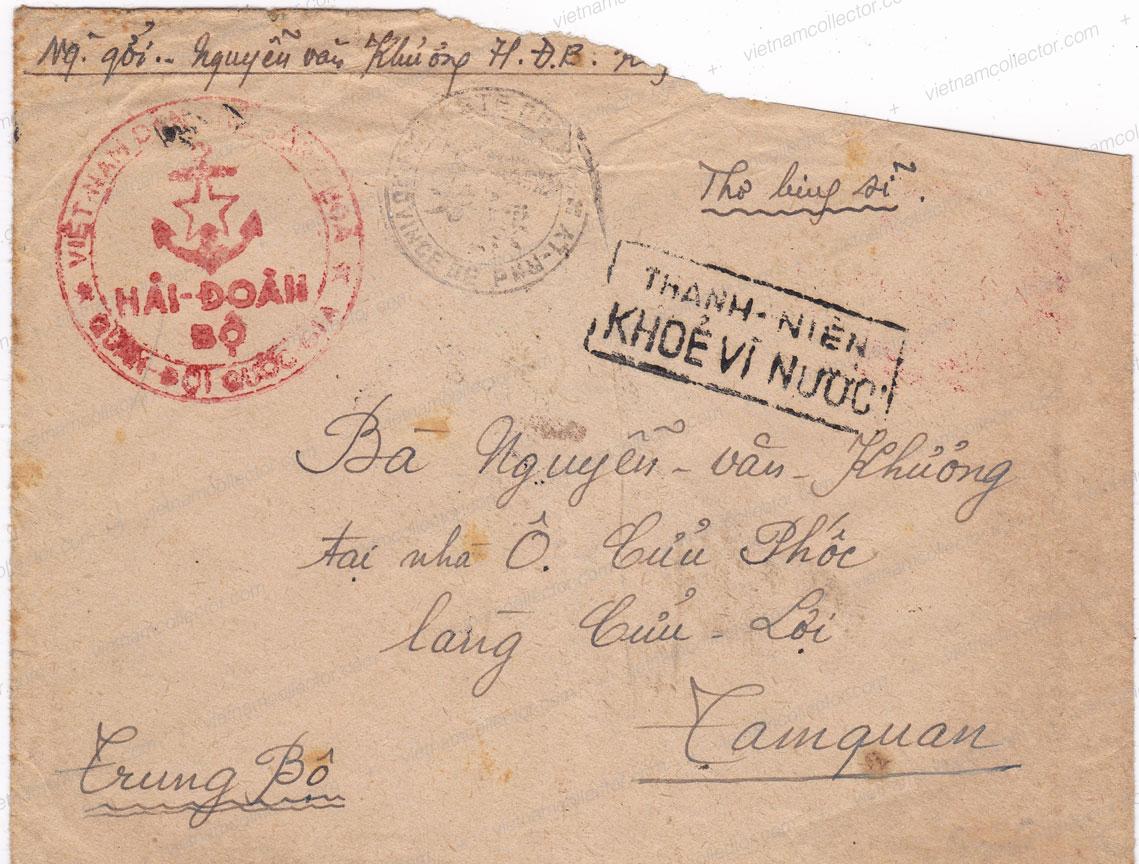
Detailed scan of the military cachet that was required to transport the letter without charge.
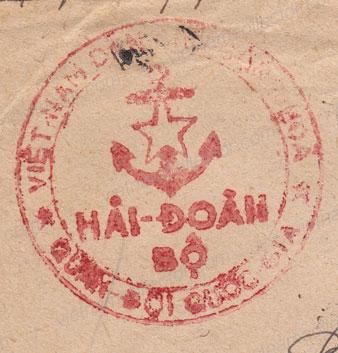
Detailed scan of the Poste Rurale cancel but from another cover that offered a better impression (courtesy of SICP member Andre’ Roland).
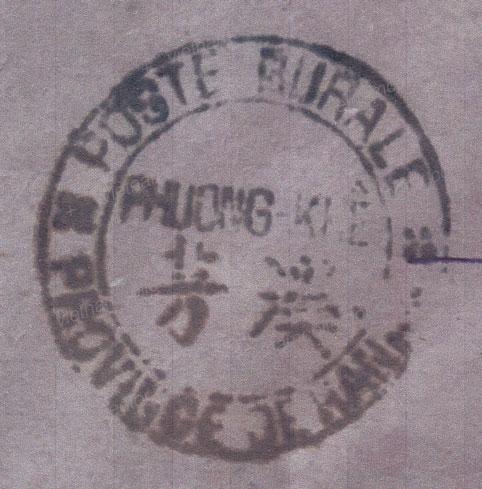
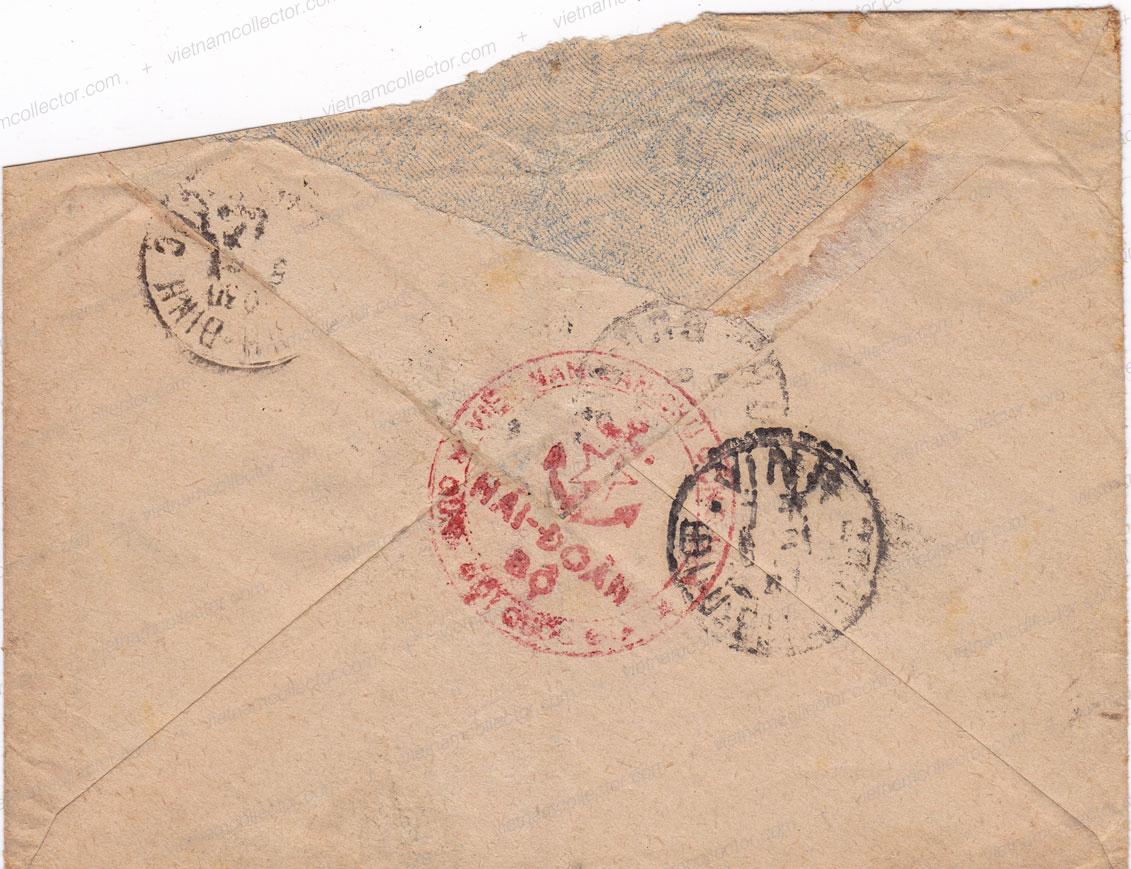
This is a very rare stampless military letter by “Operation/Management Group” (=Ban Quan Tri) sent from Hiep-Hoa to the Ministry of Commander in Chief in June of, most likely, 1950. The manuscript remark “Tho Binh Si – M.B.P.” means “Military letter -free franked”. Manuscript “TB” (=invalid) at upper right. Cancelled by Hiep-Hoa June 1st dated cancel. Unclear “Yen-The June 7th and Thai Nguyen June 8th transit cancels. Censor handstamp “Kiem Duyet” and censor’s signature mark. Red propaganda hand stamp stating “Gap rut sea scan, Tong Tan Cong” (=Hurry, prepare for general offensive” and “Fa tan am mum THU DONG cua dich” (=Break Enemy’s Fall and Winter Operation)
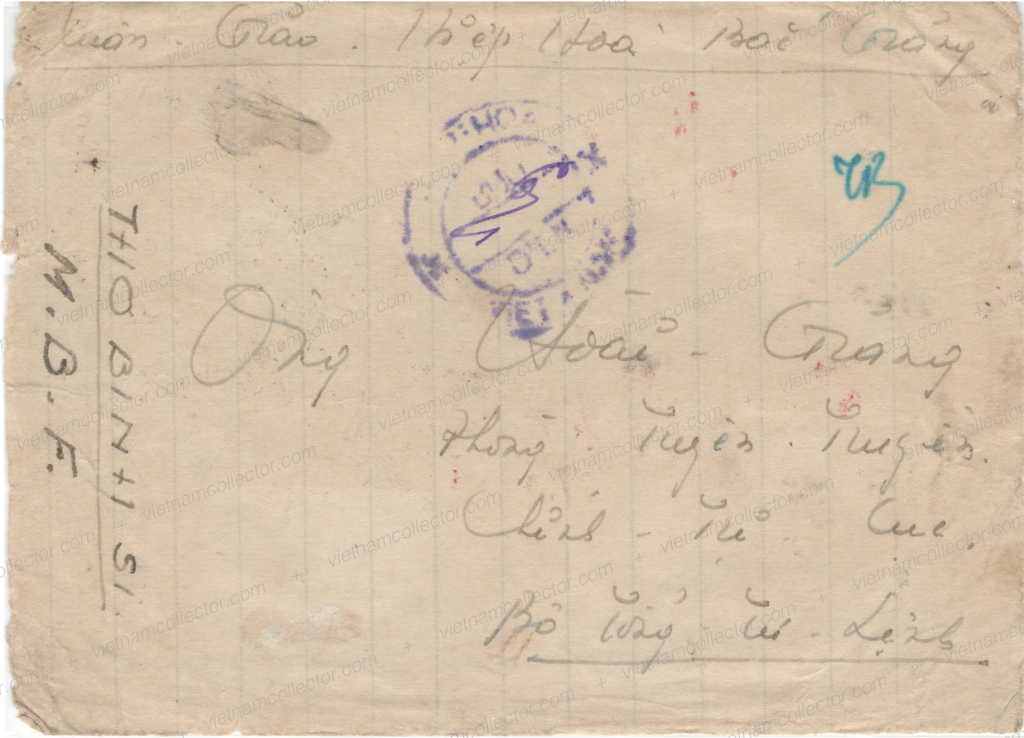
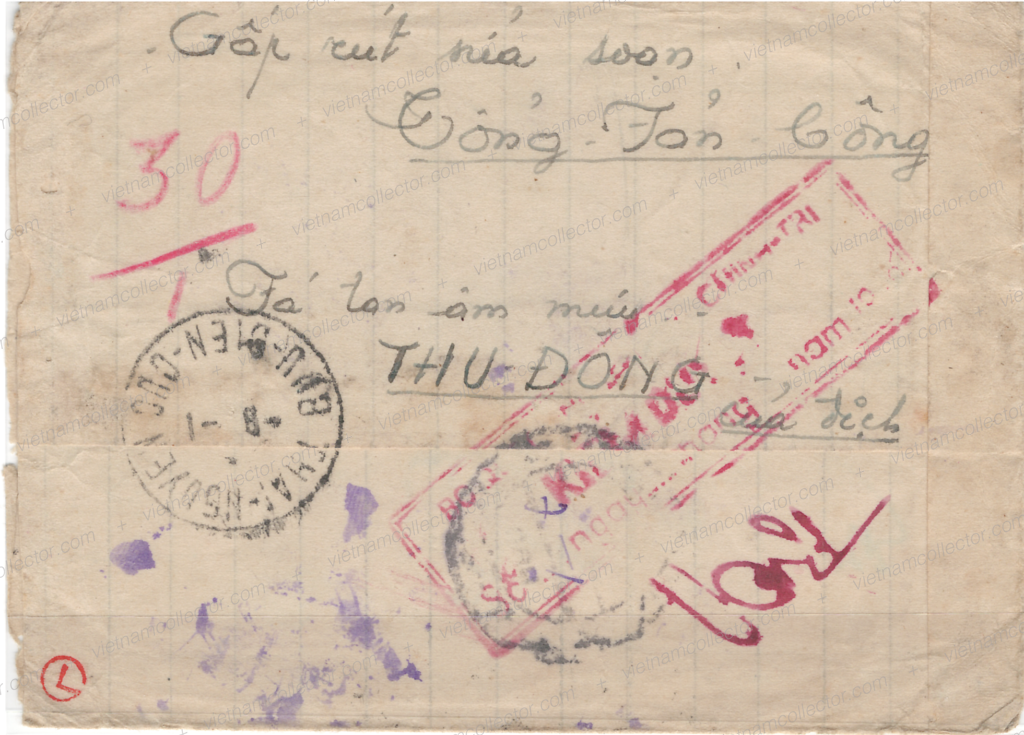
Stampless military letter sent by Nguyen Binh Duc in December of 1951 from Company 1-4th Battalion by the General Supply Department , Military Medical Department in Military Hospital 12 (Red Circular Cachet) to Lang Bac Street in Binh Xueyn Village, Doan Hung Province in Tuyen Quang City. Cancelled with the BUU DIEN THAI-NGUYEN circular cancel of the Dai Tu Post Office. The manuscript markings in the lower left mean “Military Mail” and “Postage Free”. The cover was sent to Tran Quang Vy’s father by a personal friend and officer in his unit. Vy went on to become a Colonel in the PAVN, operating as a medical doctor. Ex Vy and Ex Crenshaw.
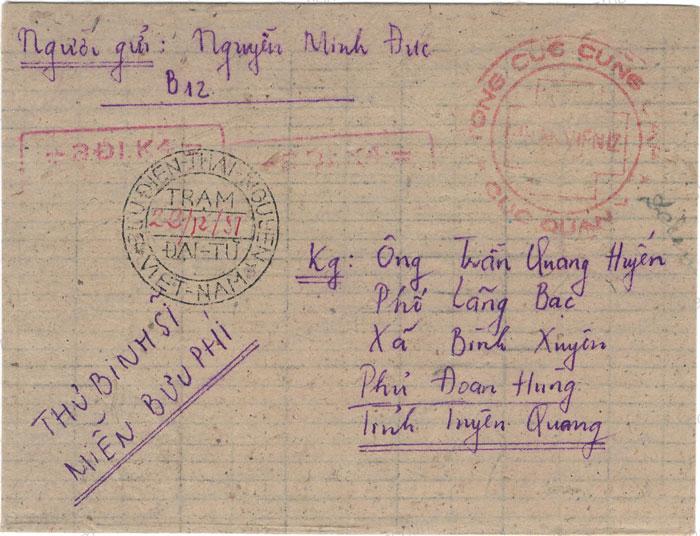
Stampless military cover from August of 1953 sent from “Truong Luc Quan Vietnam” (=Cadet School of the Infantry, Vietnam) to Viet Bai. Red circular official military seal “TIEU Doan V” (= 5.th Battalion). Manuscript “MBF” (=Free Frank) remark on top left. Red rectangular “QUAN SU KIEM DUYET” (= Military Censor Mark) at bottom left. Manuscript date and signature on the reverse.
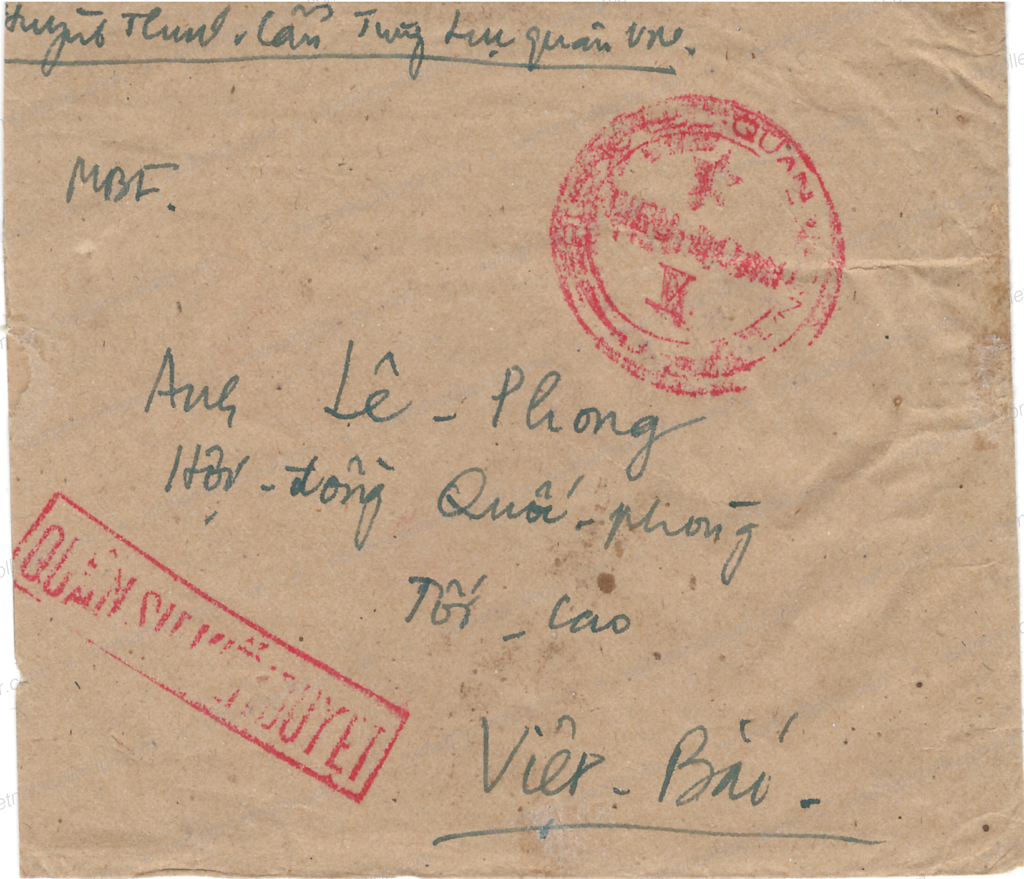
Stampless military cover (home made) from around October, 1953. Sent from the office of the Military Sanitary Service within the Department of Defense to Luong Duyen Lac in Control Commission 12 Manuscript “Thu Binh SI” (=Military Letter) and “MBF” (=Free Frank) above address.
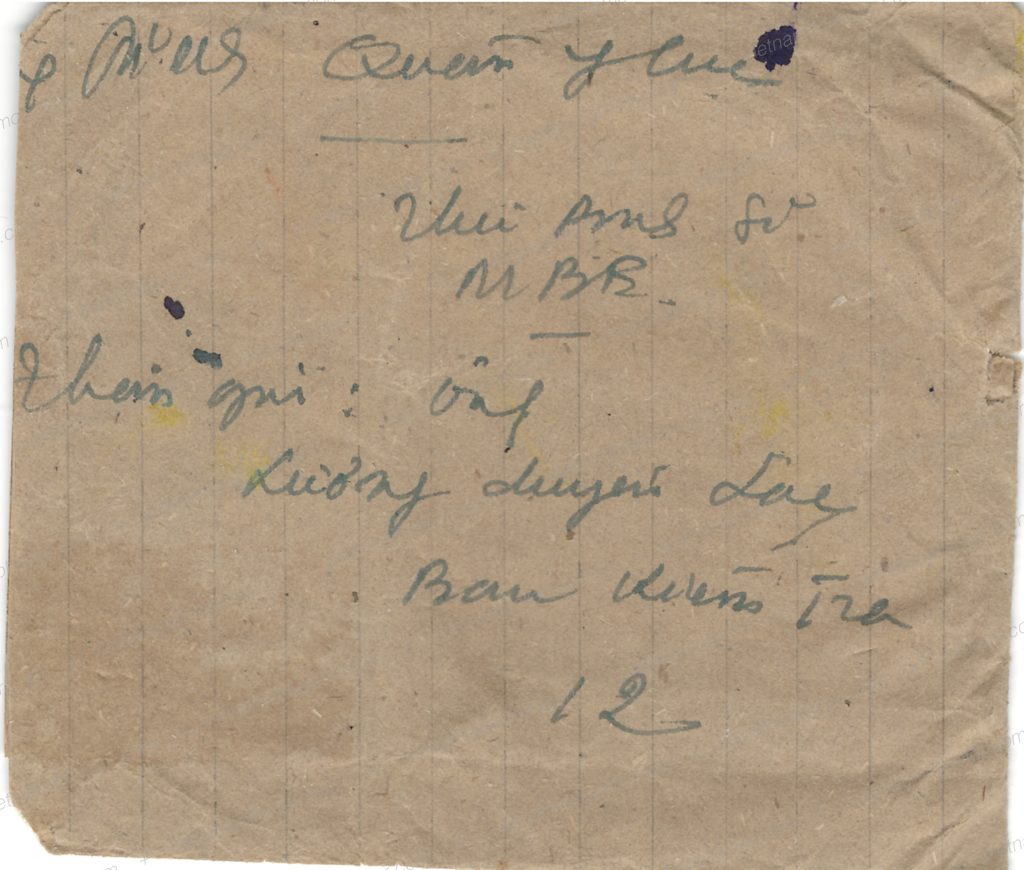
Stampless military cover (ex Gregor Schwirtz) of the Peoples Army from December, 29th, 1955 sent between two units that are only designated by their Hom Thu (Field Post) numbers and the names of the individuals. Red circular control stamp at bottom right front and red circular unit hand stamp on the reverse.
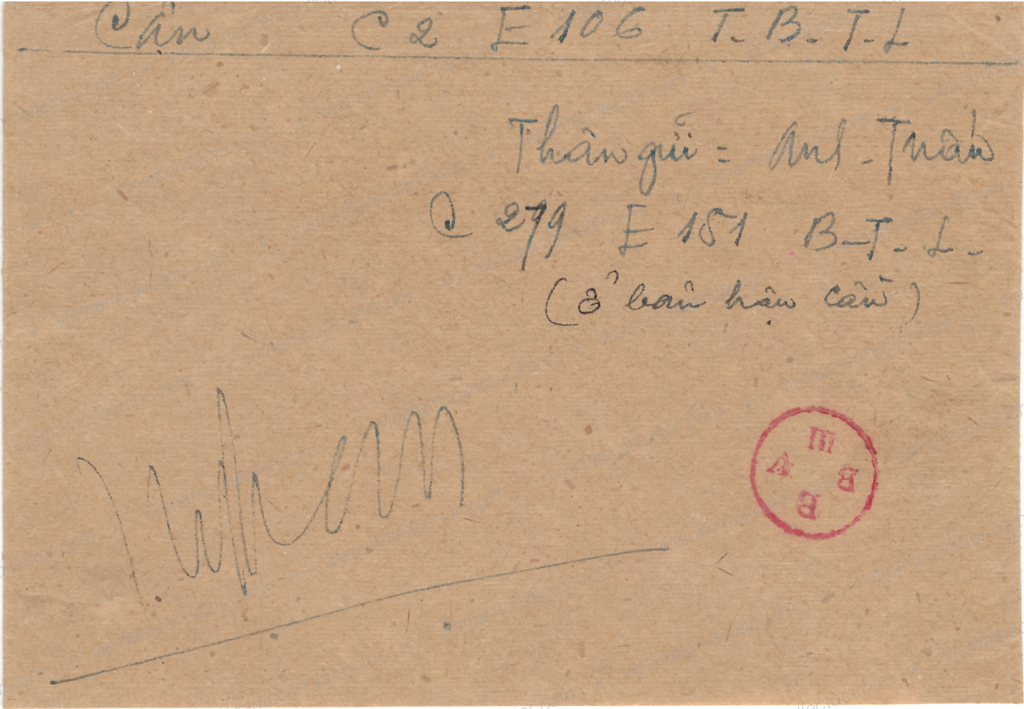
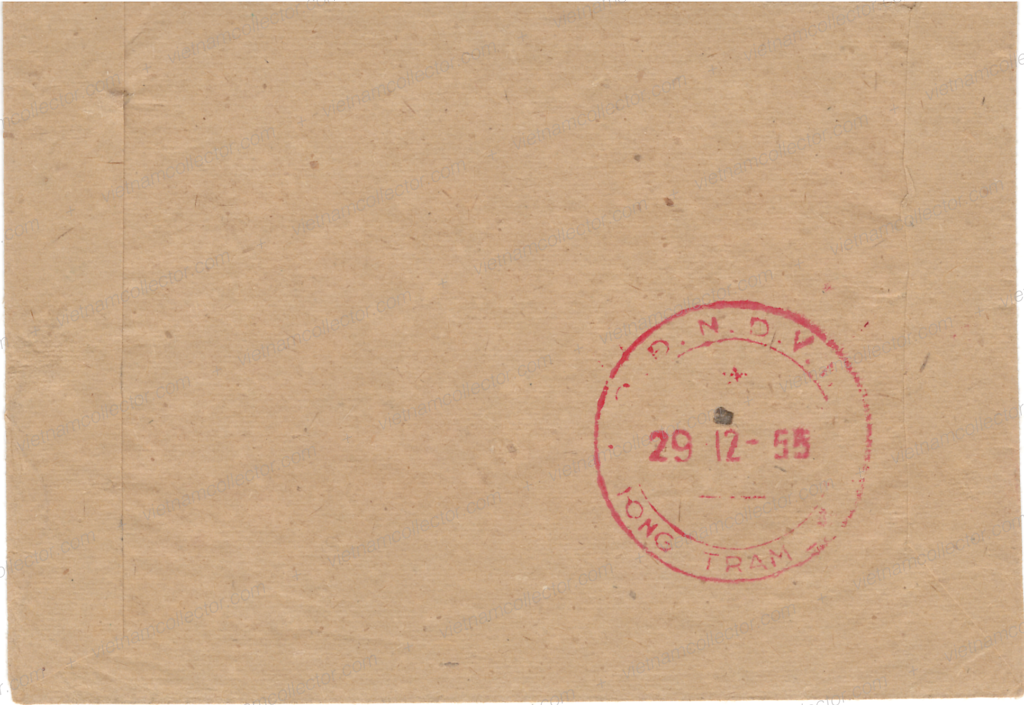
Stampless military cover sent by a member of the military to a civilian in Hanoi. Circular cancel Nong Cong (small post office) from April, 24th, 1956. Nong Cong is a small coastal community South of Than Hoa. Manuscript “MBF” (=Free Frank) and “TBS” (=Military Letter) at bottom left. Red boxed control stamp with the same initials. Hanoi machine arrival cancel on the reverse two days later.
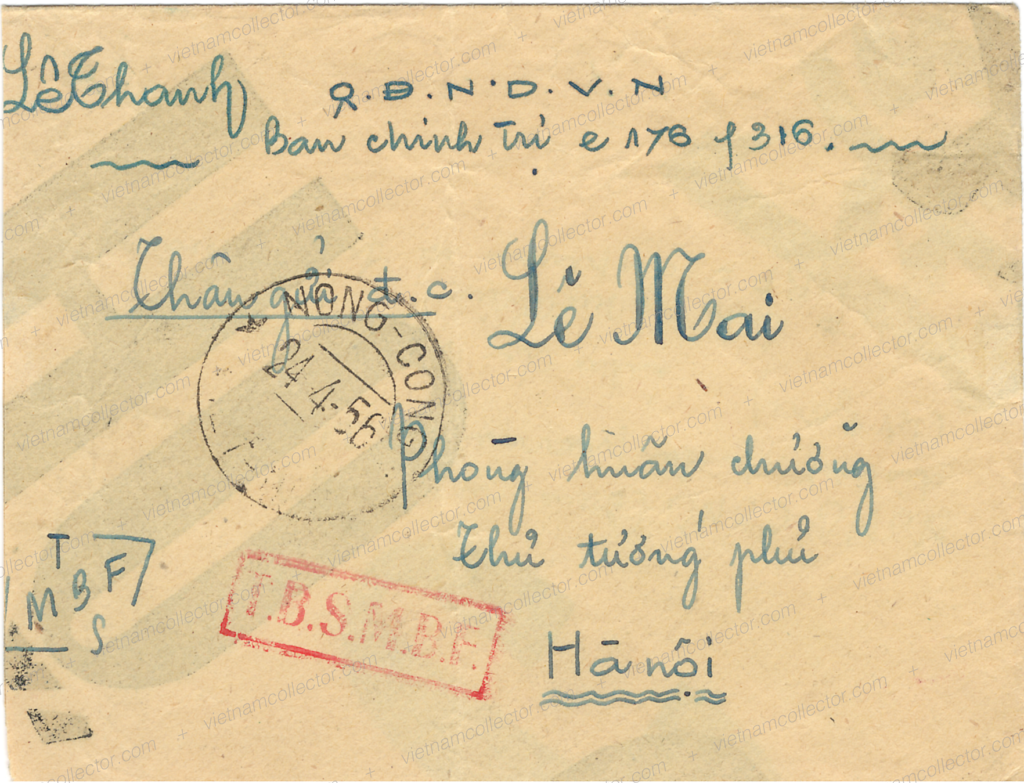
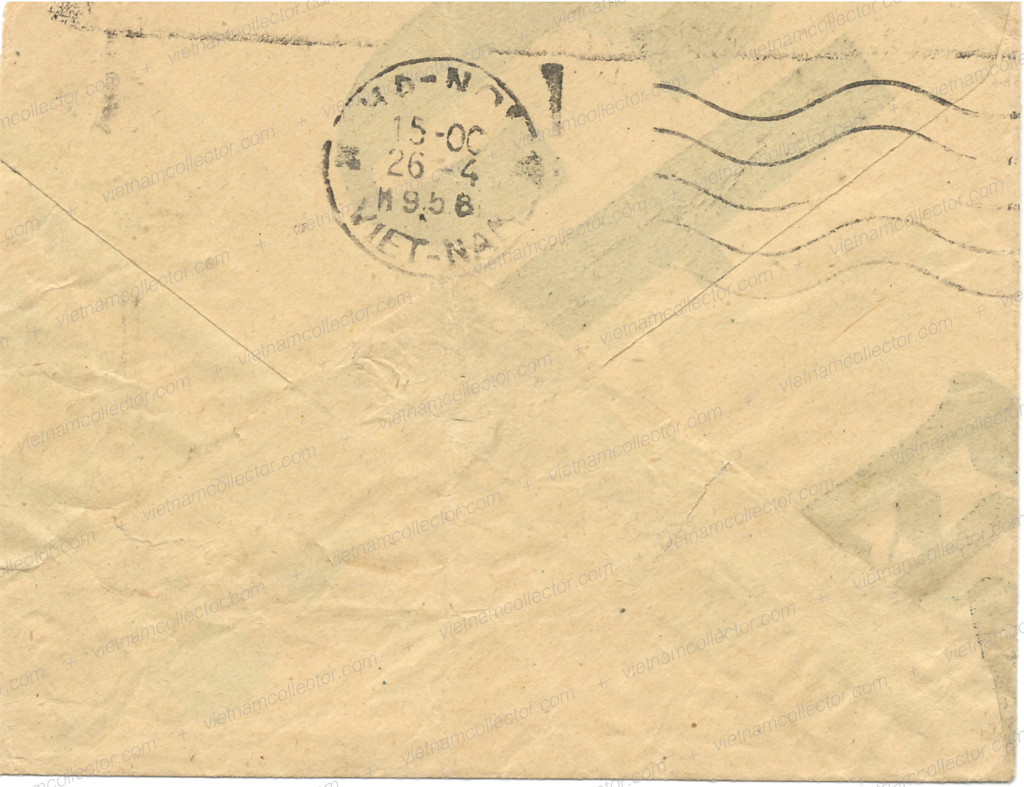
Here is a letter (full content preserved) from August of 1957 that was sent by Nguyen Ma of the central school for agricultural and forrest management in Hanoi (that was apparently attached to Military Unit MB18) to Nghiem Thi Nui in Nam Ding. Nam Dinh arrival cancel on the reverse. The envelope is a so called adversity cover that was handmade from a prior used notepad. Circular Hanoi date canceler. Nam Dinh arrival cancel. Manuscript “MBF” (=Free Frank) and “TBS” (=Military Letter) at bottom left.
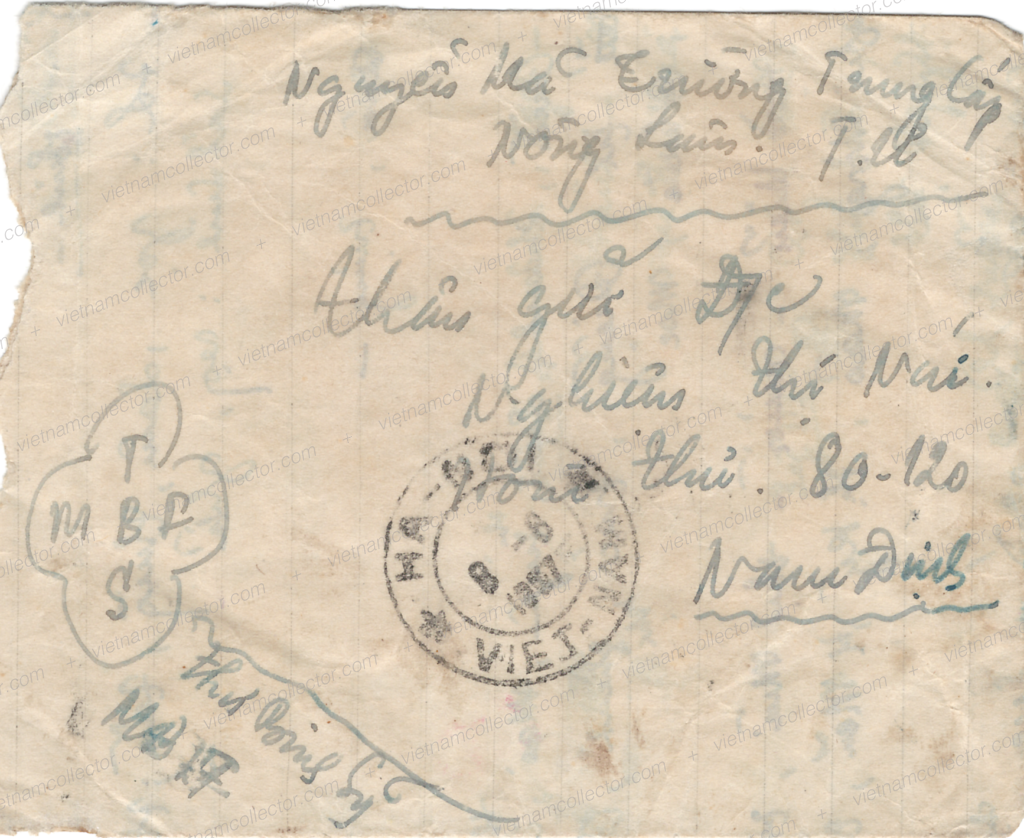
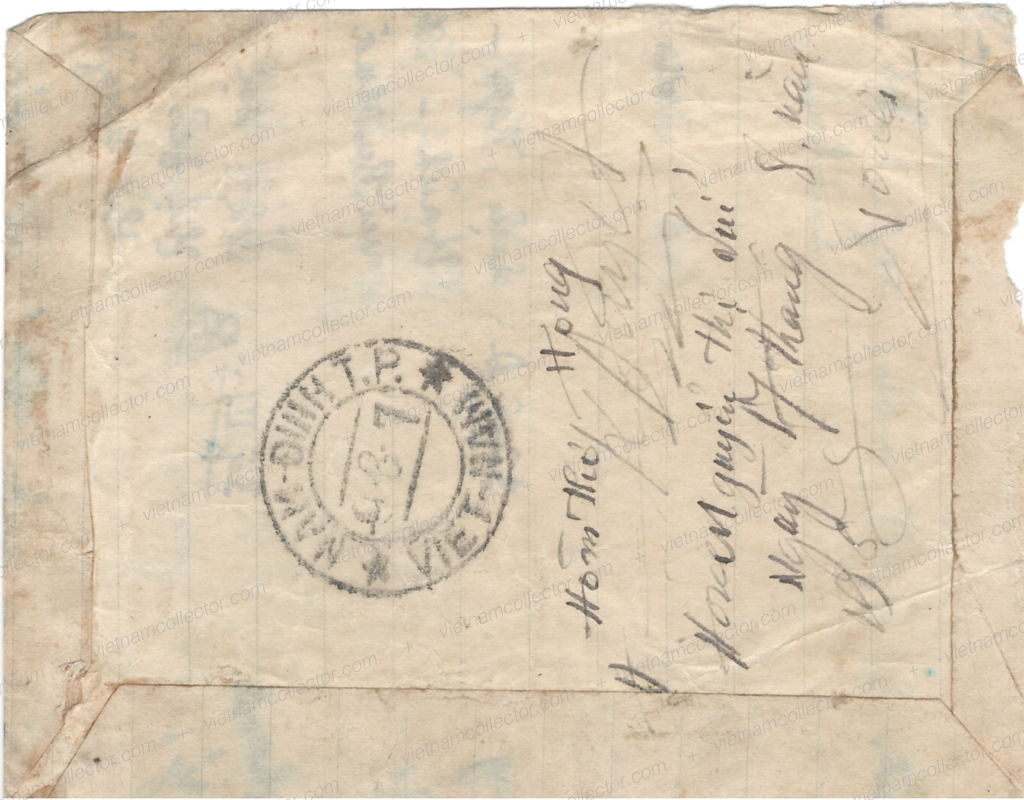
This is the unique surviving fragment of a stampless military letter (ex Gregor Schwirtz) where most of the address was unfortunately cut off, probably to disguise the Government office that received it. After all it was illegal to remove Government property from the office. One can read the German “Herrn” (=Mister) and “Deutsche” (= German) from which one can deduct that the letter was sent to the German Democratic Republic or East Germany. Military field post cancel from Unit 31 from September 1st, 1957. Because of UPU regulations the free frank system was not allowed to be used for international military mail. It had to be up-franked with valid general purpose stamps which in this case was done in Hanoi with the 100D 12 Years Democratic Republic stamp. One of a kind item that is the base for the comment contained the Michel catalogue under Military Free Franks.
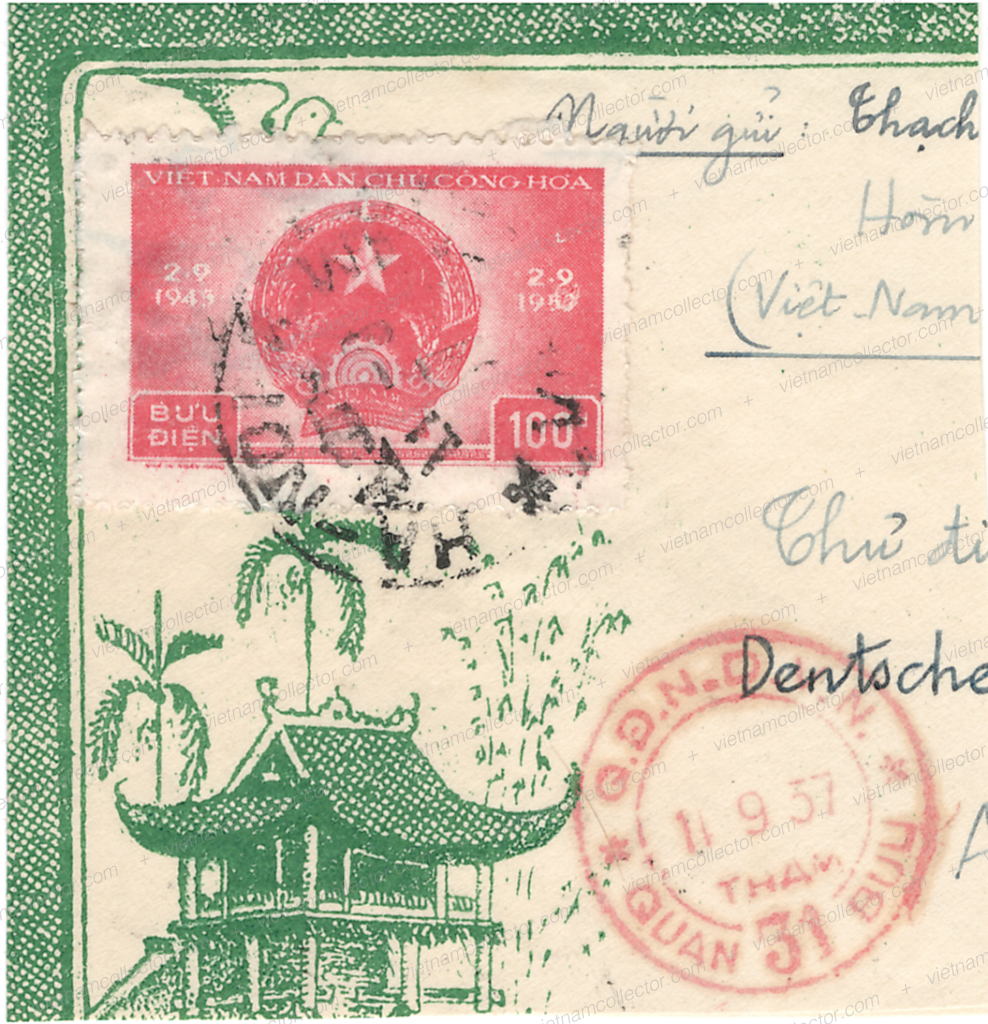
Unusual letter sent from Nam Dinh to Hanoi September 8th, 1958. The red circle hand stamp reads “THU BIN SI/TRAN 54” (=Military Letter/Bureau Nr. 54). Nam Dinh T.P. circular cancel and machine Hanoi arrival cancel from the same day. This usage is curious, as free military mail was officially abandoned as of May 1st, 1958 and this letter was mailed more than four months after that, but old habits die hard. Letters sent between two military units were still postage free but the letter below looks like it was addressed to a civilian so it should have been charged postage due. Nevertheless no postage due remarks were added to the cover probably due to a sign of respect of the postal clerk of the military . Note the early use of the Hom Thu (=Field Post) number in combination with the towns name (mail distribution location).
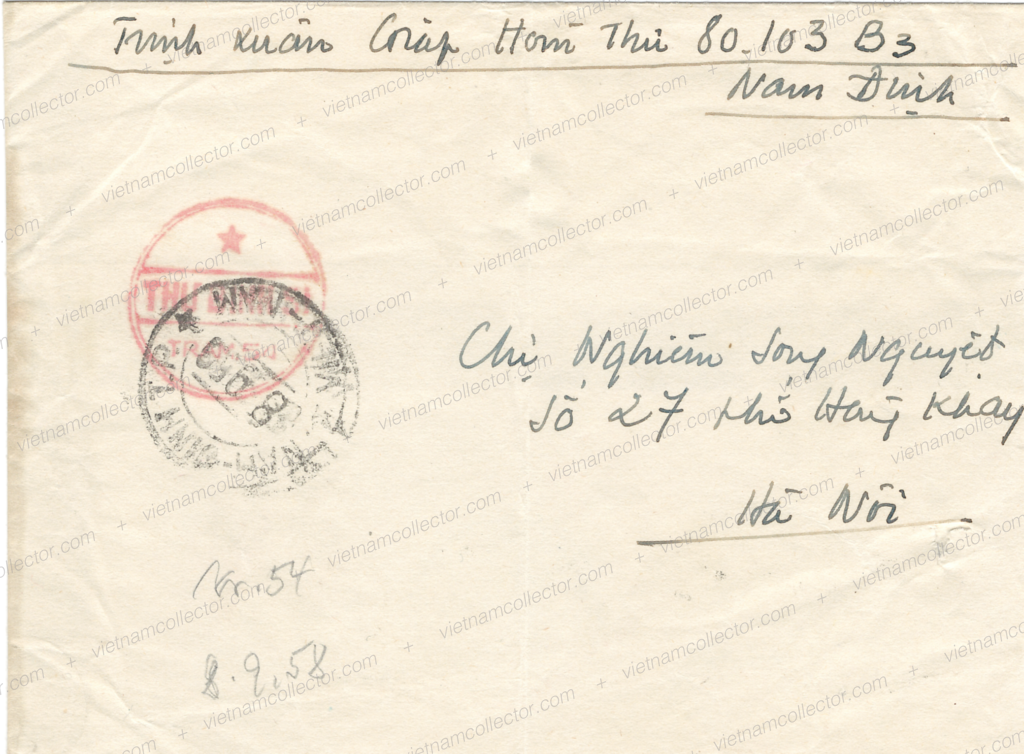
Very similar stampless military cover in March of 1959 from the same sender who was now located In Thanh Hoa (Hom Thu 31 2AG) to the same recipient in Hanoi but to a different address. Can Giay (a suburb of Hanoi) transit and machine Hanoi arrival cancel on the reverse. A witness to the transient military life.
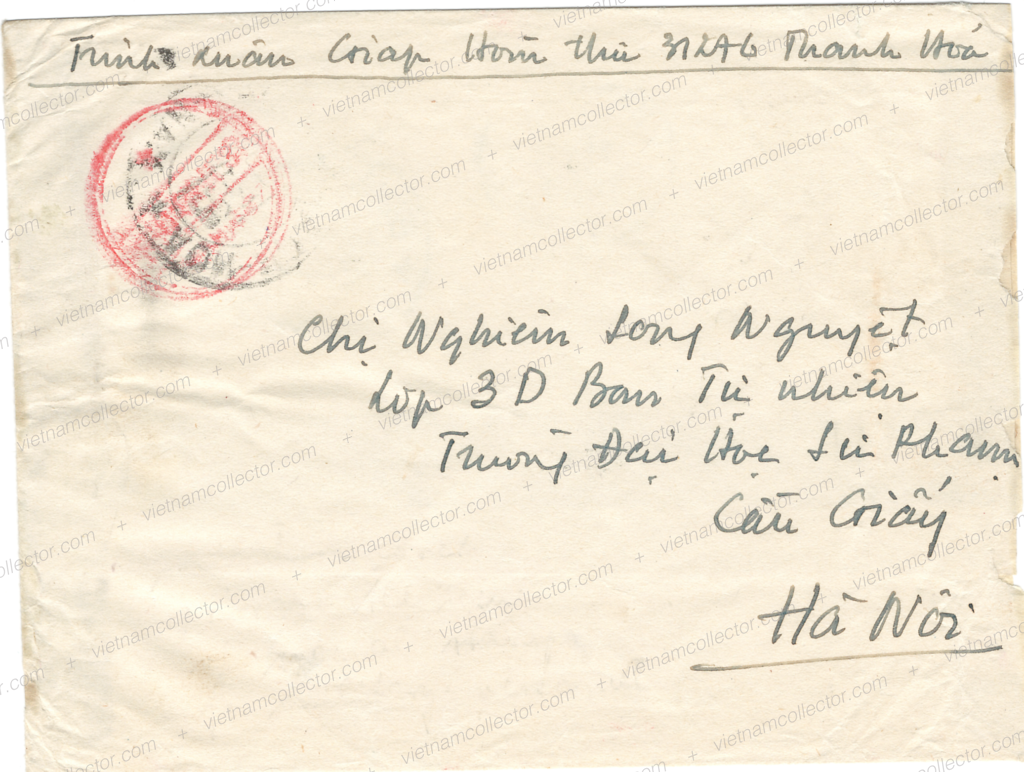
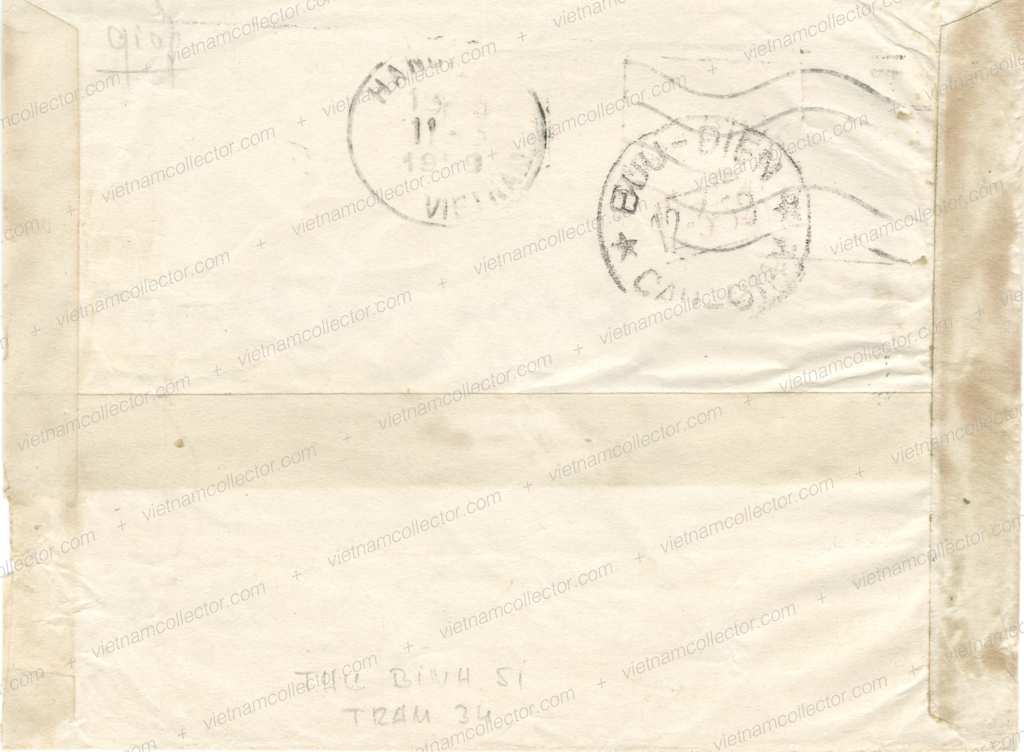
Ho Chi Minh enjoyed almost demigod statues among the Vietnamese population especially in the country side. This was based on his decade long nationalistic struggle to provide Vietnam with independence but also with the massive land reform that redistributed land from large, wealthy landowners to small farmers that started after the victory over the French in 1954. He also led a humble, down to earth life and employed other populist policies that ingratiated him to the populace. One of them was the fact that every Vietnamese citizen could write directly to him and do so without having to pay postage. Such letters were handled through the military postal system, the same way as military letters. It is unknown to the editor if this policy persisted after the introduction of Military Free Franks in 1958 or after Ho’s death in 1969. Below is a exceedingly rare letter addressed to Hi Chi Minh from a farmer from Bach-Dang (Province Phu-Tho). The letter carries the handwritten remark to the military liaison officer “Please give the letter at once to Uncle Ho”. Red circular Pho-Tho military cancel without date. Letters like this could only be saved by very senior cadres that were located in the High Command Office and are hence commensurately rare.
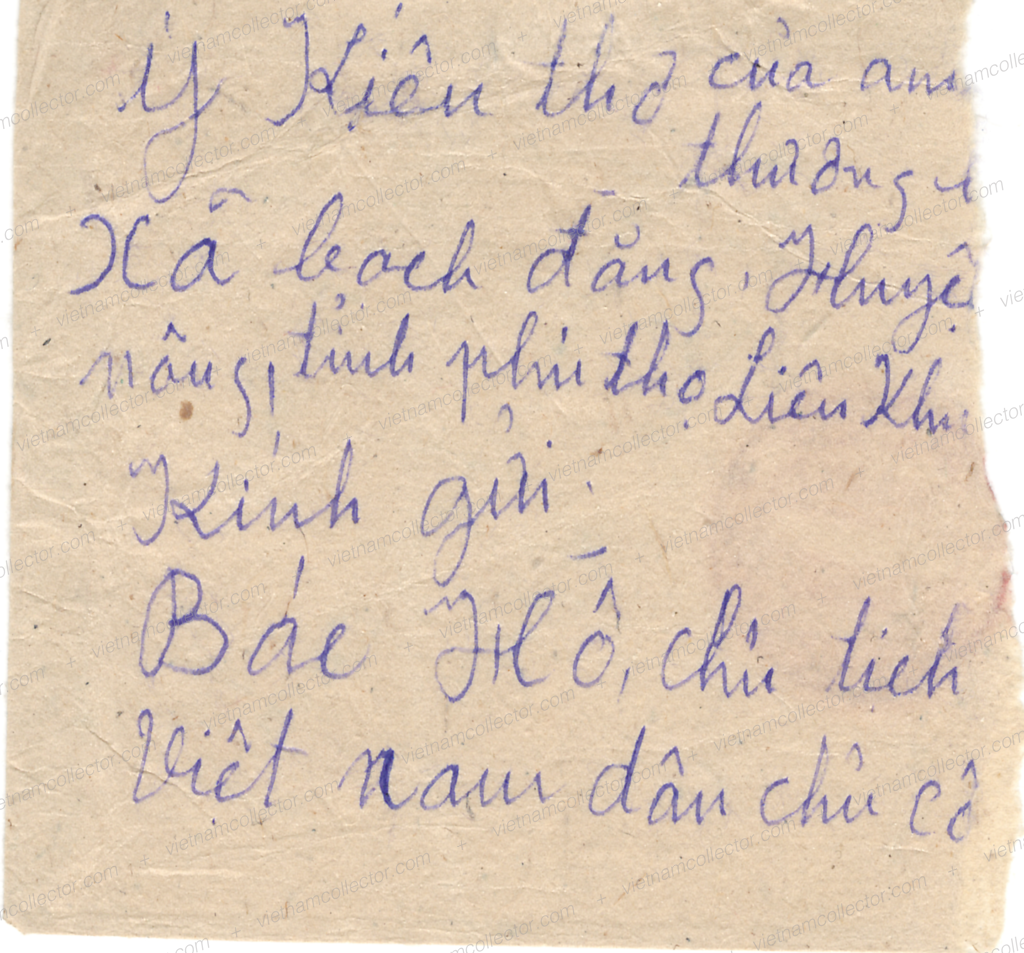
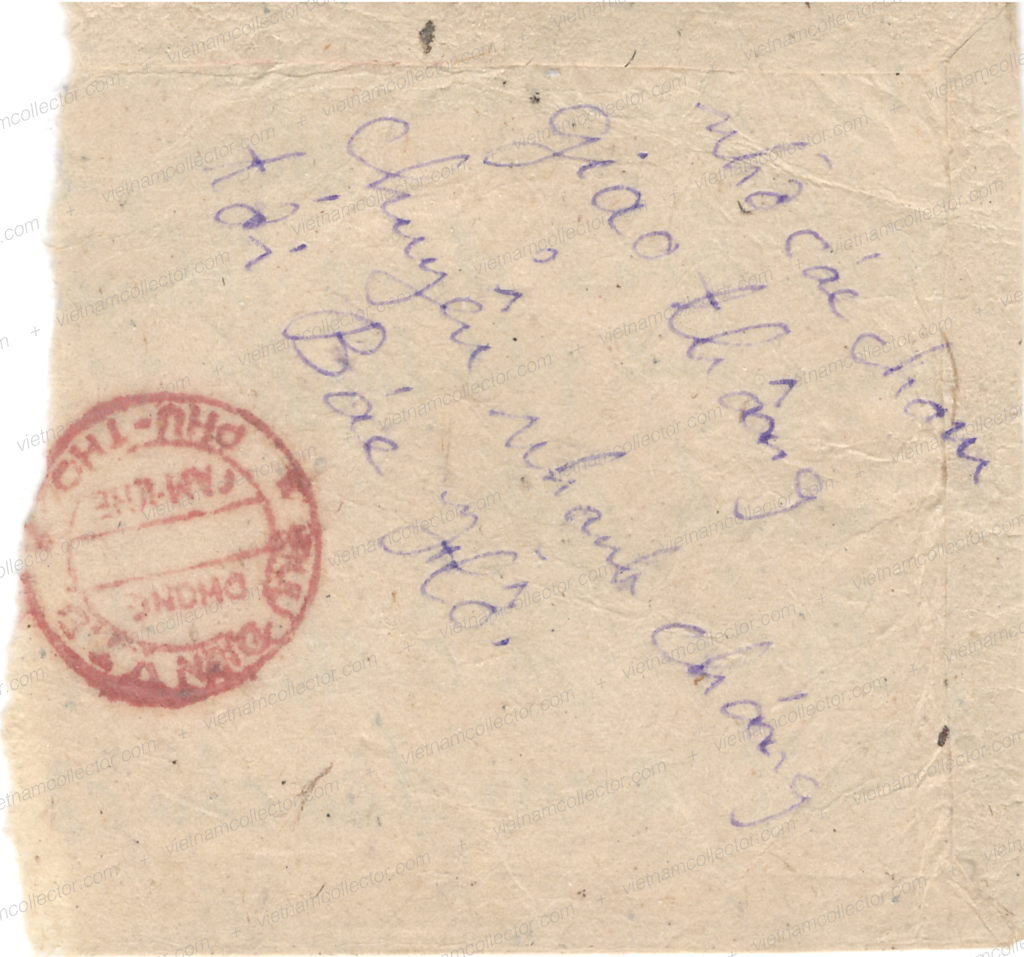
Another very rare registered letter directly addressed to Ho Chi Minh. The letter is a so called adversity cover that was fashioned from a previous written letter and was mailed by the community Trần Quốc Tuấn, District Ân Thi, Provinz Hưng Yen. Red propaganda cachet on front (=Support the 3rd World Union Congress). Four different Viet Minh transit and arrival cancels on the reverse with manuscript dates (day and month). One of them reads „Bưu điện Liên khu III- Ty Hưng Yên – Phòng Ân Thi“ (=Post Interzone III-Provincial Administration Hưng Yên – Department Ân Thi“). Two other cancels show the words „Bưu Vụ“ (= Department of Postal Matters), „Bưu điện“ (Post Office) and Ty Hưng Yên“ (=Provincial Government Hưng Yên). Hưng Yên is located just South of Hanoi. The first cancel dates from September 7th, the second from September 9th. The violet cancel is from September 10th and the rectangular official/military cancel from September 16th either 1952 or 1953. It was pretty common for Viet Minh postal workers to only annotate cancels with day and month only and leave the year off.
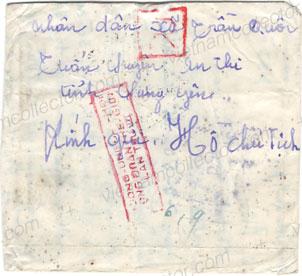
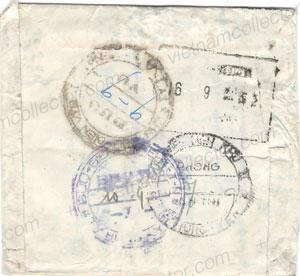
Registration Nr. 090001


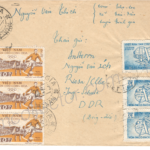
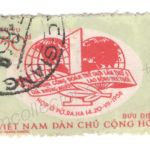


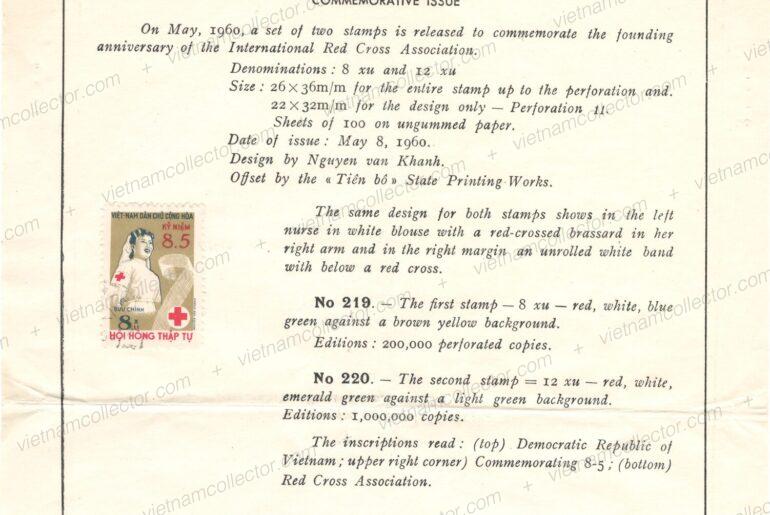
Comments are closed.